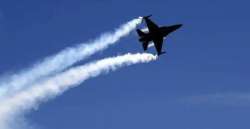With new engine, Russia to re-pitch Su-57 stealth fighter project to India
The second stage engine, internally known as Izdelie-30, marked its first test flight in December 2017 on board a Su-57 fighter jet and further developments are going on, said Chechukov.

United Engine Corporation (UEC), Russia's sole aero-engine manufacturer, has confirmed that the proposed "second stage" engine for the Su-57 stealth fighter jet will have a super-cruise feature which will form a part of the aircrafts stealth functionality.
Super-cruise is a key requirement for a stealth aircraft. Delay in its development is being cited as one of the main reasons for India reportedly halting its participation in the Fifth Generation Fighter Aircraft (FGFA) project with Russia, which involves developing a new aircraft based on the Su-57 development. The aircraft was previously called the PAK-FA.
"Super-cruise means an ability to cruise at supersonic speed without after-burners which translates into a lower heat signature besides enormous fuel savings," head of marketing of UEC, Anton Chechukov, told this correspondent.
The second stage engine, internally known as Izdelie-30, marked its first test flight in December 2017 on board a Su-57 fighter jet and further developments are going on, said Chechukov. He, however, refused to divulge any technical information or details of the development schedule, stating that the project was classified.
He added that the Izdelie-30 was the most advanced aircraft engine project ever to be conceived in Russia and would surpass its peers in performance.
Sources in United Aircraft Corporation, which is building the Su-57, and Rosoboronexport, the Russian arms export agency, separately told this correspondent that the stealth fighter programme had not been abandoned and that Russia will take it forward with New Delhi when the engine and other technologies sought by the country in the FGFA were ready for export.
The Su-57 features include six internal weapons hard-points to sharply reduce radar signature, top speed up to Mach 2, X-band Active Electronically Scanned Array (AESA) radar for situation awareness, L-band AESA radar for target identification, infra-red search and track (IRST) system to identify objects through their heat signature for targets beyond the radar's range.